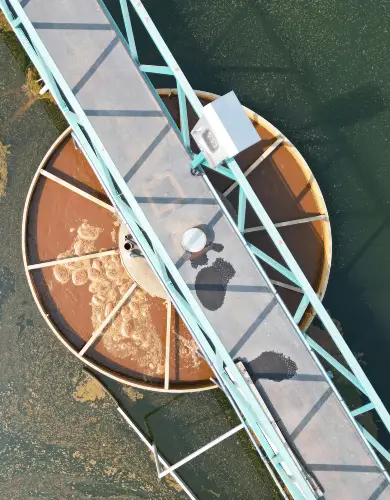The business water bill explained
Part of our job at AquaSwitch is to make sure you understand the UK business water market, so we have put together this guide explaining the business water bill.
There are over twenty different licensed water suppliers for UK businesses, but the way they charge for water is regulated and, therefore, predictable.
The business water bill will always show you your SPID, and the details of your Water and Wastewater charges.
Contents
- SPID
- Charge type (Water and/or Wastewater)
- Water charges in detail
- Wastewater charges in detail
- How to set up your first business water bill?
What is the SPID? (Supply Point ID)
The supply point ID (SPID) is a ten-digit code followed by a letter. It is used by business water suppliers to identify the location of the water supply to your business premises.
Generally, a business premise will have one SPID for the freshwater supply and another for sewerage connection for the removal of wastewater.
The supply point ID is fixed for each business premise and will stay the same if you choose to switch business water suppliers.
Business Water Bill Charge Types
The charges on a business water bill are always split between the water coming in, and water coming out of your property:
Water
These charges are for the supply of fresh potable water to your business premises. The water charge will depend on how much water your business uses. If your property doesn’t have a water meter, it will be charged based upon the rateable value of your property.
💡Industrial users of water pay 20% VAT on business water.
See below for how business water charges are calculated.
Wastewater
These charges are for the removal of used water from your business premises into the sewer system. These charges will apply to any premises that have a connection to the sewer system.
See below how business wastewater charges are calculated.
Drainage
In about half of the English regions, businesses are charged separately for rainwater drainage. Drainage charges are fixed annually and depend on property size. For more information, visit our surface drainage charge guide.
How is the business water bill calculated?
Fixed / Standing charge – This is a standard fee made by the supplier to cover its costs for meter readings and maintaining your business water connection.
Volumetric charge – A fee that depends on the amount of water your business has used. The charge per cubic meter of water will depend on the location of your premises and the scheme of charges of your business water supplier.
Water charge = Standing charge + (Volume of water used x Volumetric rate).
For a full guide, check out our article on business water rates. Alternatively, we’ve built an interactive business water rates calculator.
How to calculate my wastewater bill?
The wastewater charges are usually charged with both a fixed fee and a volumetric charge.
Fixed / Standing charge – The fixed wastewater charge is made by the supplier to cover the cost of maintaining the pipes that connect your property to the local sewerage system. This charge is determined by the size of pipes from your business premise.
Volumetric charge – A business water supplier will make a charge that depends on the amount of water you have returned to the sewerage system. The supplier will estimate this charge based on the volume of water supplied to the property.
Return to sewerage factor – To estimate how much of the water supplied to the business premise has been removed as wastewater, the supplier will apply a “return to sewerage factor”. As a default, most suppliers will assume that all water supplied to a business will also be removed as wastewater (ie a factor of 100%).
Wastewater charge = Standing charge + (Volume of Water used x Volumetric rate x Return to sewerage factor)
💡If you believe you’ve been overcharged for wastewater charges then visit our guide on how to claim a sewerage rebate for your business.
How to set up your first business water bill?
In the first few months after moving into a new commercial property, the existing water supplier typically sends a water bill through the post.
Your first bill will request details of the business now occupying the property (if they haven’t received this information from the previous tenant). They’ll usually provide a form on their website to submit these details.
For more information, visit our guide to dealing with your water supply when moving business premises.
Your first water bill will be charged at expensive deemed contract rates. Fortunately, the deregulation of the water market means businesses can choose who supplies their water and find a cheaper deal.
At AquaSwitch, we provide a hassle-free way to compare business water suppliers.

